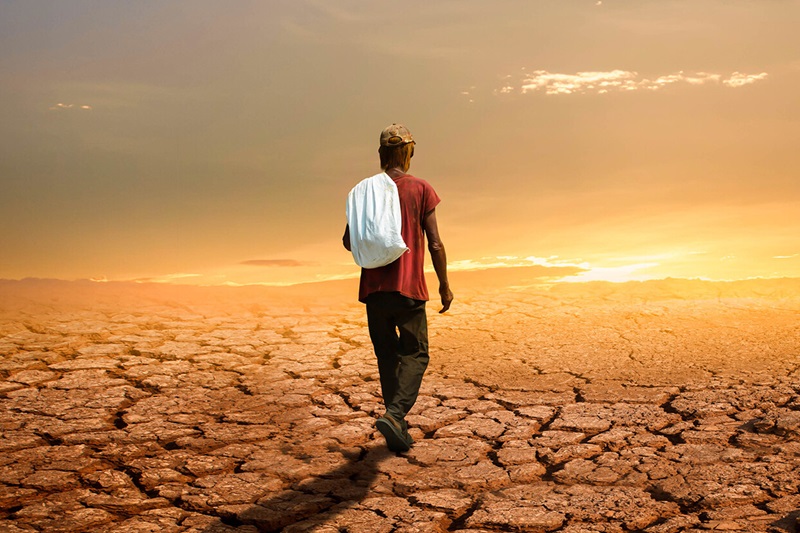
the heat is on understanding the dynamics of climate change and migration
Last updated on January 8th, 2024 at 12:40 pm
Climate change, an impending global crisis, manifests its impact in multifaceted ways. Beyond the evident e2nvironmental repercussions, the intricate interplay between climate change and human migration has become a focal point of discussion. As our planet grapples with rising temperatures, extreme weather events, and slow-onset changes, the discourse around climate migration intensifies. In this exploration, we delve into the complexities of this phenomenon, scrutinizing predictions, unfolding realities, and the potential long-term consequences.
The Emergence of ‘Climate Refugees’
The term ‘climate refugee’ has permeated news cycles, encapsulating the plight of individuals compelled to abandon their homes due to the far-reaching consequences of the climate crisis. Whether these displacements are temporary or permanent, the ramifications are profound. The evolving narrative of “climate or environmental migrants” underscores the expanding impact of a warming planet on global migration patterns.
Quantifying the Threat: Displacement Estimates
Forecasts from esteemed institutions like the Institute for World Economics and Peace and the World Bank paint a disconcerting picture. By 2050, millions may face severe displacement, a confluence of environmental change, conflict, and civil unrest attributed to climate change. Oxfam’s projection of a potential 216 million climate migrants globally by 2050 accentuates the gravity of the situation.
Unveiling Current Realities: Internal Displacement
The International Organization for Migration (IOM) reports that weather-related events, such as storms, floods, and droughts, accounted for 98% of the 32.6 million new internal disaster displacements in 2022. The most affected countries include Pakistan, the Philippines, China, India, and Nigeria. However, this internal displacement might not necessarily translate to widespread cross-border migration.
The Role of Climate Change in Migration
Jacob Schewe, Head of the PIK FutureLab for Security, Ethnic Conflict, and Migration, notes that while migration related to climate change has increased, it hasn’t surged as anticipated. The socio-economic impact of climate change disproportionately affects the impoverished, making migration an unattainable option for many. The impoverished lack the means to migrate and are compelled to endure the adverse effects of climate change in their current locations.
Debunking Catastrophic Predictions
Contrary to “startlingly huge predictions” of mass migration, the Climate Migration Institute’s report challenges the narrative. It emphasizes that movements induced by climate-related disasters tend to be internal and temporary rather than permanent. Citing examples like floods in Pakistan and droughts in East Africa, the report contends that such displacements often prompt immediate action, but the affected individuals eventually return to their homes.
Dynamics of Short-Term Solutions and Long-Term Impact
Rapid-onset disasters typically lead to short-term displacement. However, repeated disasters may alter this trajectory, pushing affected populations toward permanent or more distant relocations. Factors influencing these decisions include a community’s vulnerability to climate change, an individual’s access to resources for migration, and the ability to navigate legal pathways.
Vulnerability, Inequality, and Lasting Responses
Certain populations, particularly island nations facing rising sea levels, may endure higher long-term risks, resulting in distinct migration patterns. The Climate Migration Policy Institute report posits that slower on-set climate change events, like rising sea levels and prolonged droughts, may indeed lead to more prolonged and cross-border migrations over time.
Navigating an Uncertain Future
As climate change exacerbates existing inequalities and insecurities, the most vulnerable bear the brunt, often left with limited options to adapt to persistent climate-related disasters. The distinction between sudden climate crises and slow-onset events blurs, intensifying in frequency and severity as the planet warms. While mobility emerges as one response to climate change impacts, it’s neither inevitable nor uniformly negative. Government actions can play a pivotal role in facilitating safer, legal pathways for individuals affected by climate-related events.







